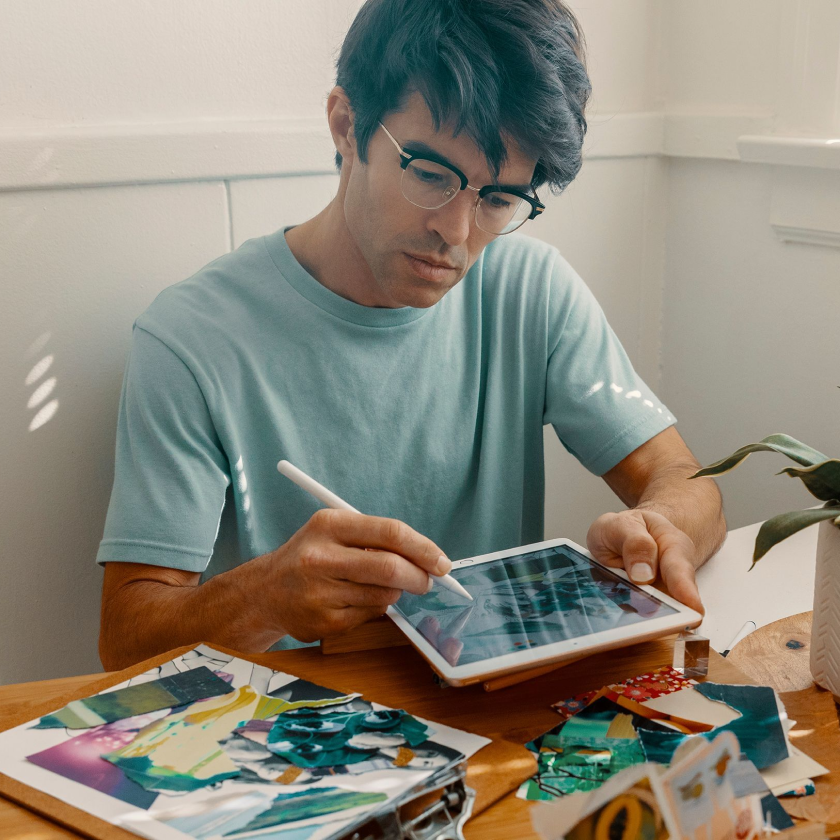In a world where it seems like everyone with a smartphone thinks they’re a photographer, a professional with a polished and unique style can really stand out.
Photography is a fantastic career path for a creative looking to explore a particular niche or branch out into different areas. From fashion and retail to wedding photography, the opportunities are endless.
If you’re looking to take your passion for photography from hobbyist to professional, you don’t have to tackle everything at once. To make the transition less overwhelming, we’ve broken down the steps to starting your own photography business.
How to start a photography business in 5 steps
1. Review the foundation: Your portfolio
Your photography portfolio is the first thing potential clients want to see and it defines your style.
Ask yourself if it’s the best representation of your current skills and specialties with an indication of the work you want to pursue in the future. This may mean you dig into your archive, re-edit, or reshoot. Revisit your portfolio on a consistent basis.
2. Make a plan and make it official
Consider your specialty and what that would entail. What’s your niche? Who are your ideal clients? What kind of lifestyle will it give you?
Wedding photography is a popular choice for many full-time photographers. This area has a lot of potential clients but it does require photo shoots on nights and weekends. Meanwhile, real estate photography typically offers more regular business hours.
A photography business plan isn’t a requirement, but it will give you momentum and a better chance at success. On the most basic level, it should contain your business structure, target market, pricing, and goals.
Next you should decide on a business name. Ensure it’s available at the required level of government, as a URL, and in social media accounts. Then legally register for a business license, buy your domain name, and create any social media accounts. Now you can create a logo, marketing strategy, and marketing materials such as business cards, social media posts, and a website.
You may also need to protect your personal assets and your company with separate business insurance and a business bank account. If you need major equipment upgrades, income, or other startup costs, you may need to secure a business loan.
3. Invest in your photography equipment
Needs can shift based on your type of photography, specialty, and growth plans. For example:
- If you specialize in sports photography, a high-quality zoom lens with stabilization is key
- Portrait photography requires a mirrorless camera with a large aperture
- A lightbox is a necessity for product photography
However, if you have a camera and access to a computer, you’re in business. You can also rent equipment to scale with your growth.
Equipment doesn’t just mean cameras and lenses. You also need to consider peripheral things like editing software. Dropbox integrates with a variety of apps, from Adobe Photoshop for editing to accounting software for managing business expenses, so you can streamline your workflow and stay organized. You can also share and review all your creative projects—photos, video, and audio—using Dropbox Replay.
If you don’t have your photos digitally archived, it’s time to get or upgrade cloud storage. It’s the industry standard to store and back up photos and other large files. Uploading to the cloud keeps your physical storage like your computer and memory cards ready for the next shoot. It also ensures that they’re safe and up to date.

4. Sign clients, shoot, deliver
Before you even talk about a job, you need a contract outlining the basic expectations and requirements for both you and your client. This should always include pricing, deposits, cancellation policy, timeline, delivery, and use. You can even collect legally binding signatures online.
To prepare for the day-of shoot, get a fact-sheet together. List any equipment you need to bring, location, schedule, timeline, shot list, and any incidentals. Stay organized and access it on the go by storing it in a folder dedicated to the job. Your RAW photos can also live here with the final edits.
Then it’s time to deliver the final photos in a way that protects your work from unauthorized use. With Dropbox, you can add an extra layer of security with watermarks, password protection, and expiration dates for shared links.
It should also be a secure and easy handoff for you and your client. Dropbox Transfer allows you to securely send files up to 250 GB to anyone—they don’t even need a Dropbox account. Using Transfer sends a copy of your files to recipients, so the originals remain safe and untouched in your Dropbox account. You can even add your logo to your transfer download page to make a lasting impression with clients.
5. Grow and maintain your photography business
When you’ve achieved some cash flow and can articulate more about your business, you can start to think more about how you can grow and market your business. Start by updating your website and social media accounts by adding or upgrading your pages with:
- FAQs
- Pricing
- Online booking
- Bio/About Me
- Ratings/Reviews
- Your portfolio
Referrals can be a great way to grow, but don’t be afraid to explore different revenue streams. One of the most popular for professional photographers is stock photography. What was once a throw away photo can now be a passive source of income.
Starting your own photography business is different from learning the art of photography. Photography skills are just as important as how you organize, market, and deliver your photography services. If you combine both, success means you can get paid to be creative.
Bring your ideas to life with Dropbox as your canvas
Starting a photography business requires careful planning, investment in quality equipment, and an effective marketing strategy.
The Dropbox suite of tools and features enables you to securely store, edit, and share your photos, ensuring your work is safe and easily accessible. By integrating with your favorite editing and project management tools, you can focus more on your creative process and less on pesky admin tasks.
So what are you waiting for? Embrace the power of Dropbox to elevate your photography business and turn your passion into a successful career.


